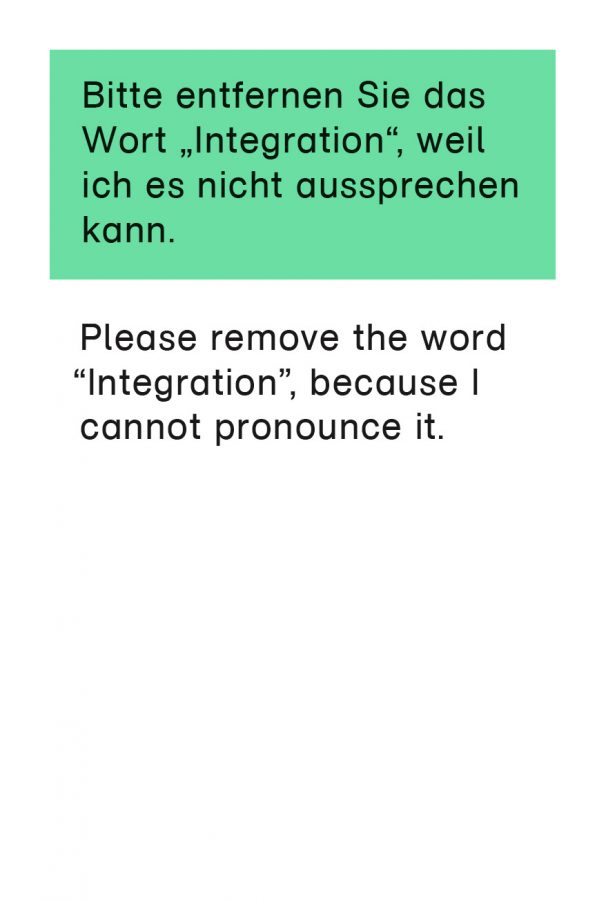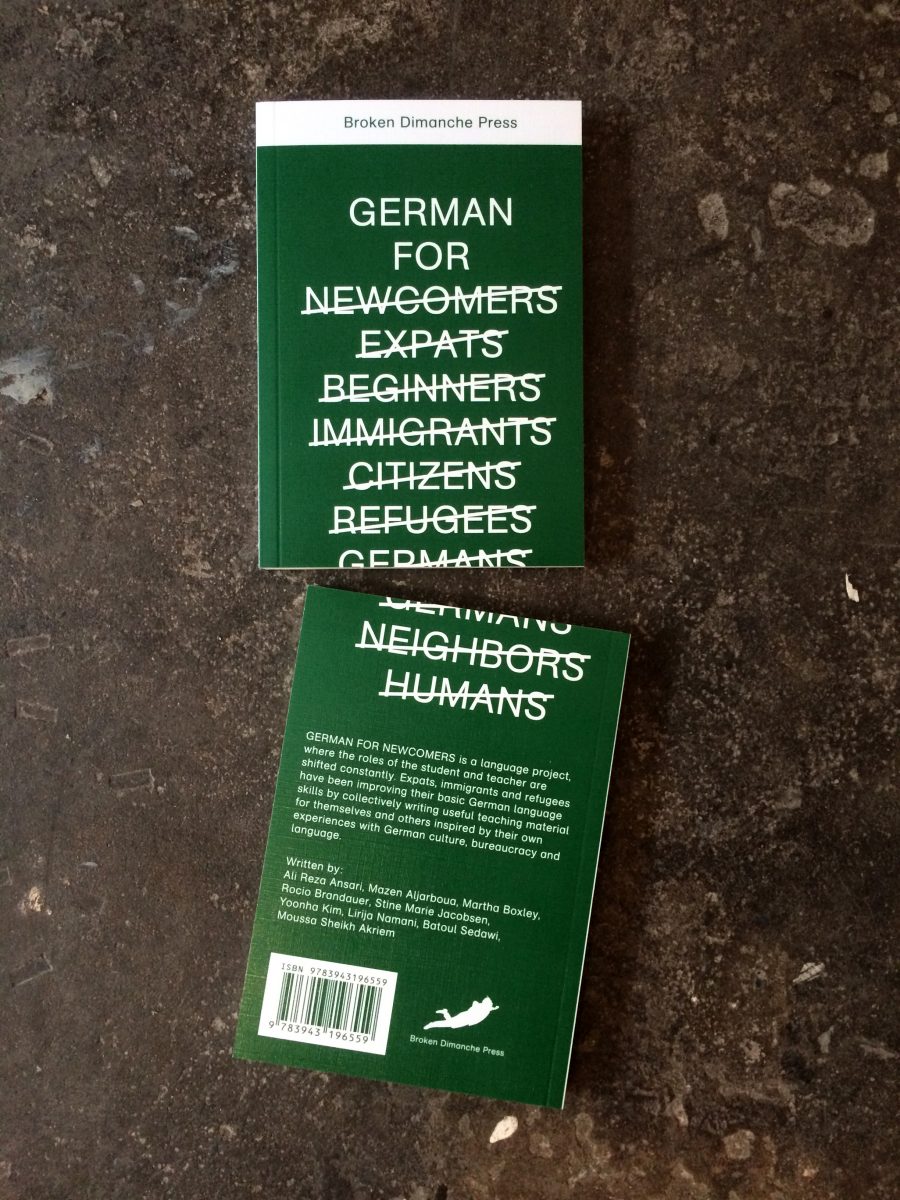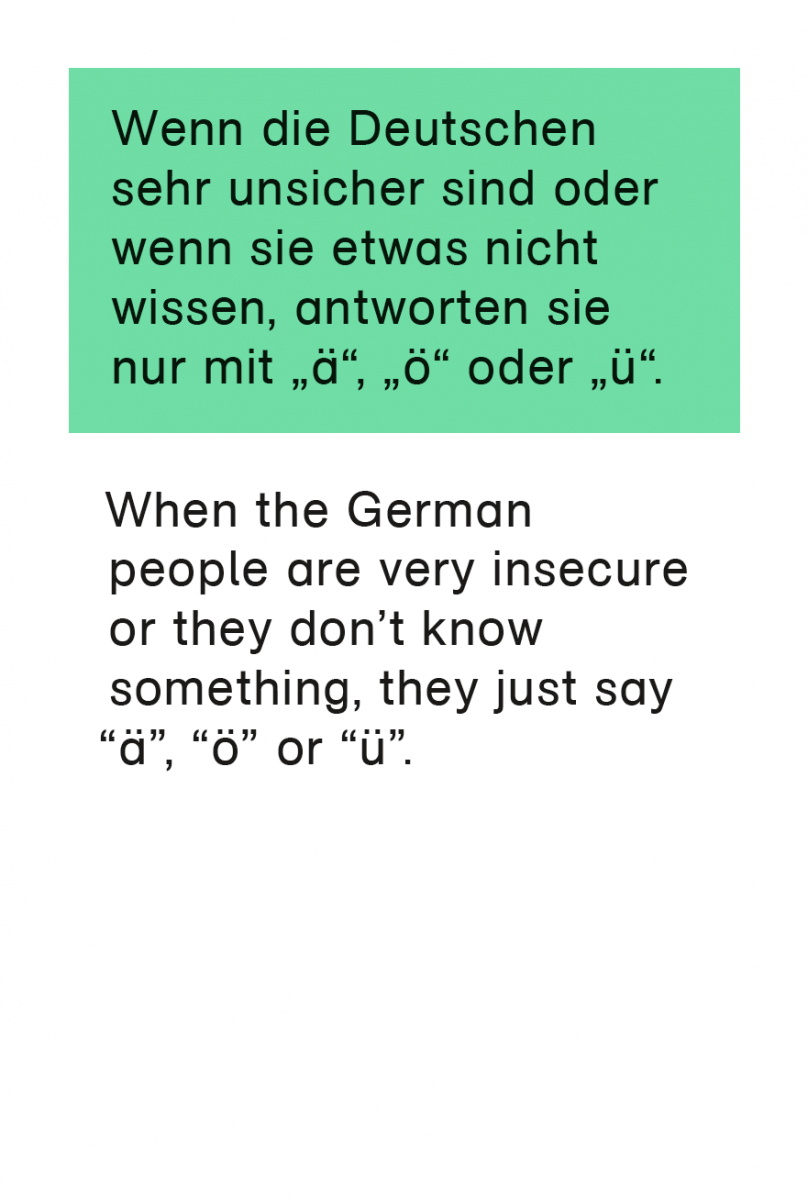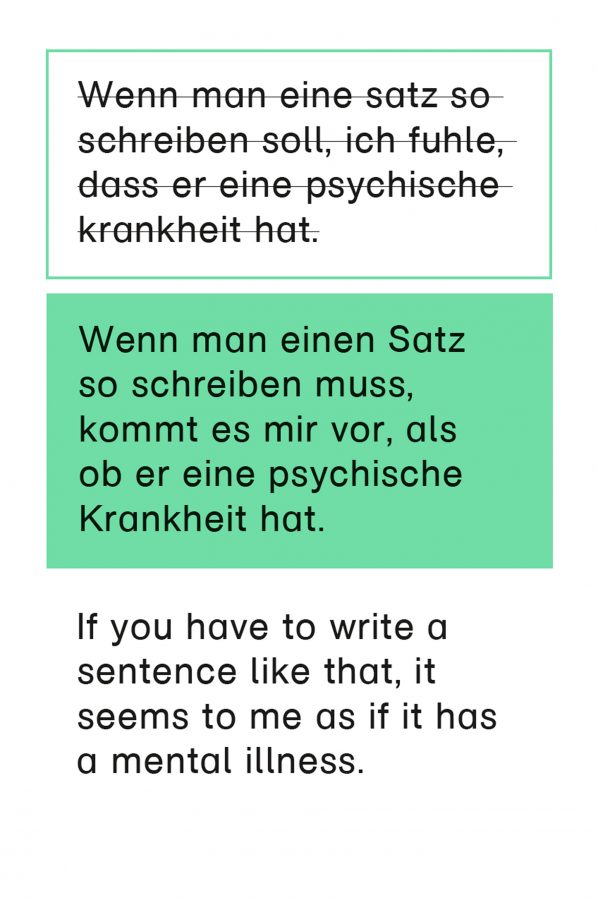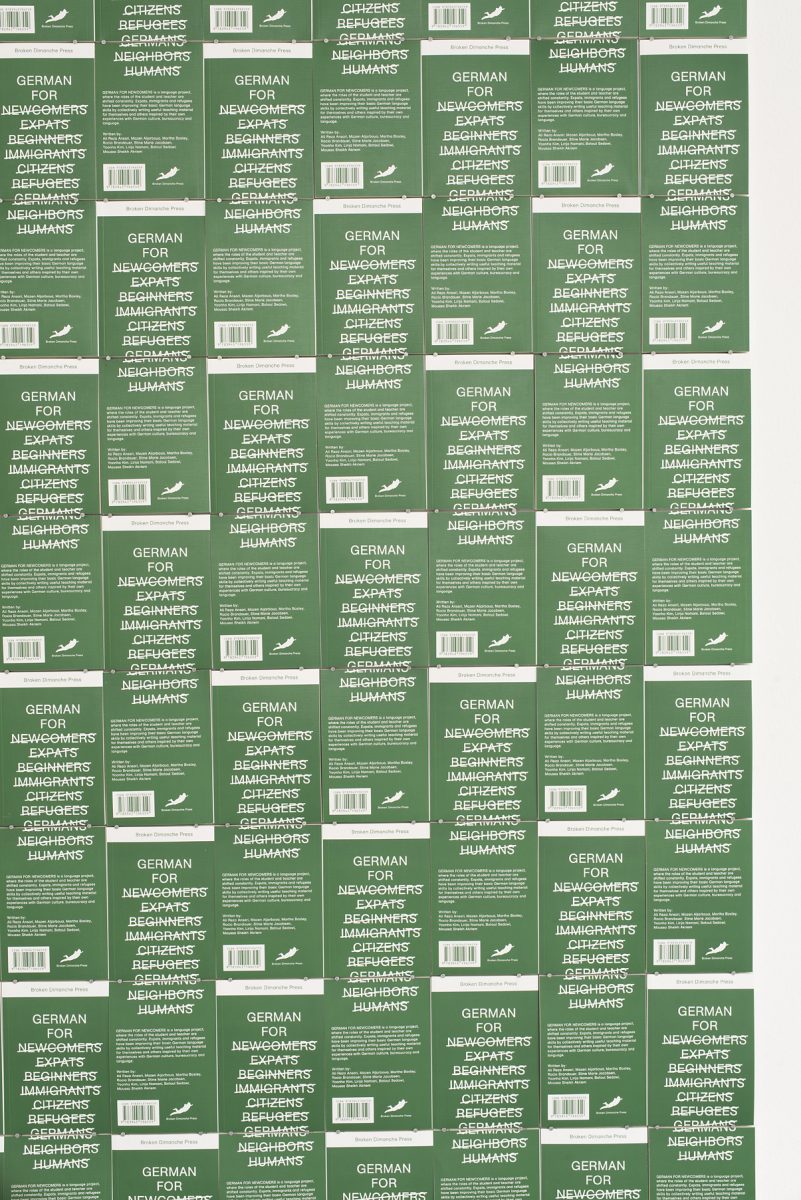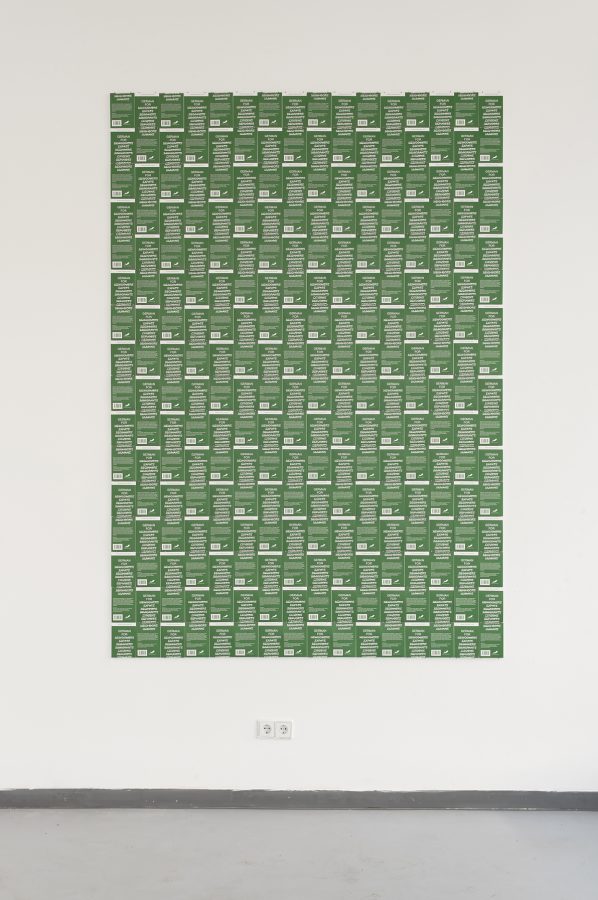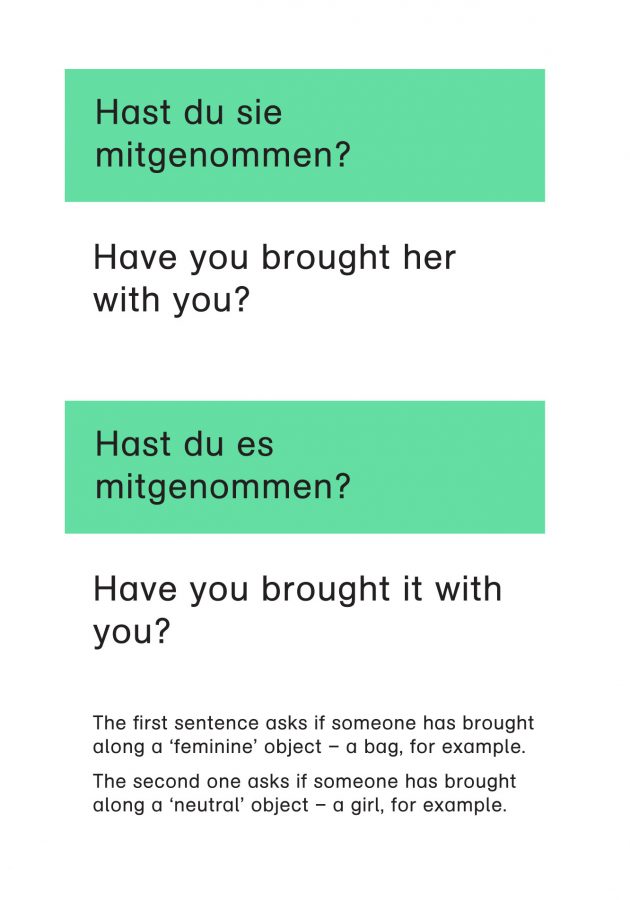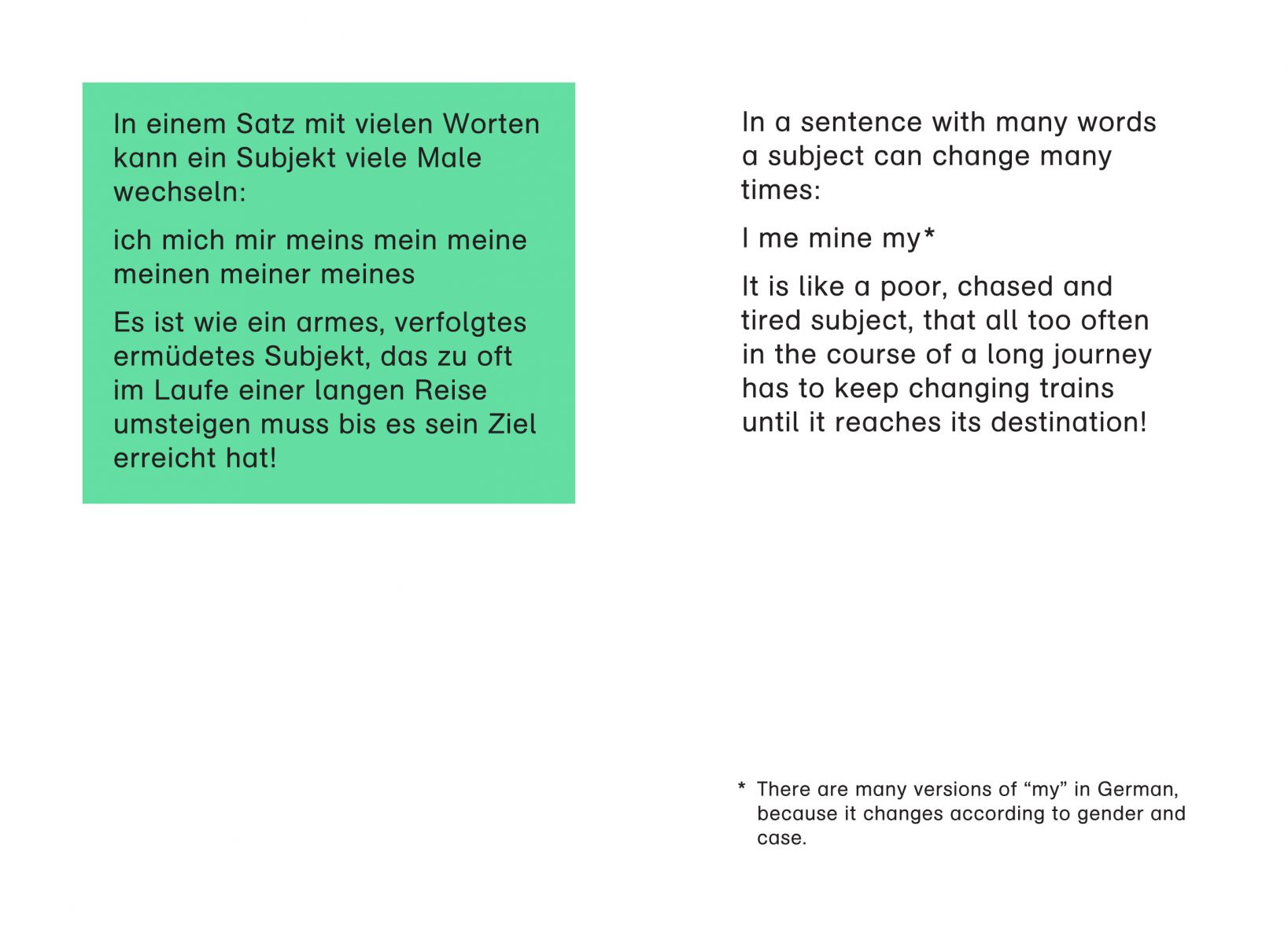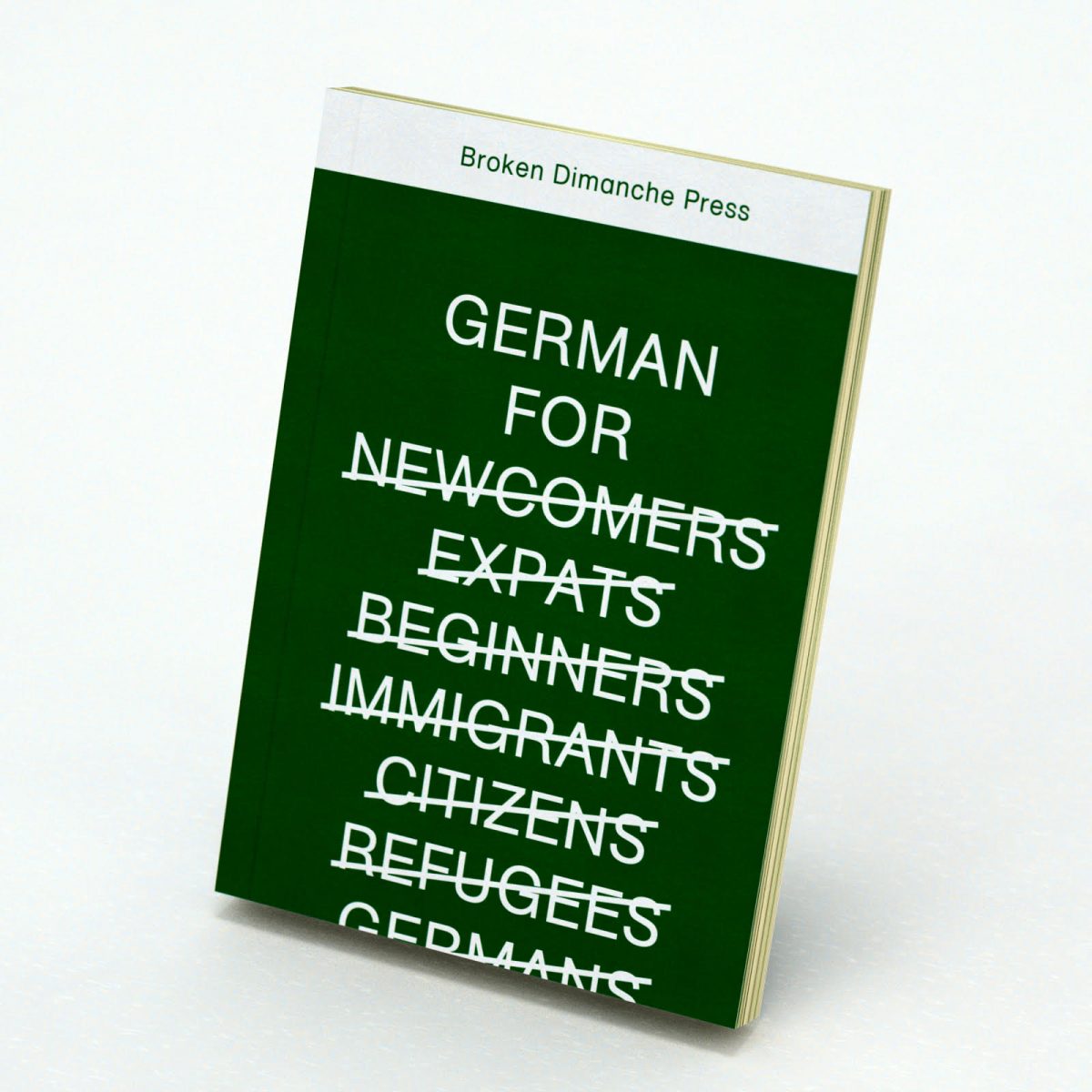German for Newcomers
German for Newcomers (2016-) is an alternative language course and teaching book made for newcomers in German-speaking countries and a related film series – both conceived as an art project and a teaching concept. Here expats, immigrants, and refugees improve their basic German language skills by collectively writing useful teaching material for themselves and others, inspired by their experiences with German culture, bureaucracy, and language.
In this project, the artist Stine Marie Jacobsen plays the role of a non-teacher. As a brief background of how the artist came to this format of an art project, it should be mentioned that she has been interested in the processes of learning a language and fascinated by how a personality “translates” into a foreign language over a longer period of time.
Jacobsen is especially intrigued by the resistance and acceptance that prevails as a person adopts a new language. Her strong artistic interest and focus lie in dealings with people, the relational aspect of the artwork, in this case language class students.
Meanwhile Jacobsen has also been giving German classes to artists and curators for many years. In 2015 she published the book German for Artists with content designed for artists who are new to the Berlin art scene. She has developed a set of unusual teaching methods. For instance, Jacobsen asks language students to serve as teachers of various aspects of the German language. About this pedagogic strategy she says:
“When we have to verbalize what we have learned and give concrete instructions, we reach a better understanding than we had before. When we teach, we move from being objects of someone else’s grammar rules or laws to becoming ‘subjects’ of our own.”
In German for Newcomers, the artist has gathered many of these experiences in a concept for teaching newcomers (expats, migrants) the German language. Based on their information needs and in collaboration with the students, she has gathered the relevant content and language examples for another teaching book, German for Newcomers (2016), as well as a film series of self-written scenes, where the students enact the German language.
German for Newcomers differs from the traditional language classes in the way that the role of student and teacher are shifted. The student is the one who develops the content of the classes and an attitude towards the German language, whereas the teacher ends up in a less authoritarian position.
Here a quote by a student from the teaching book:
“When Germans are very insecure or they don’t know something, they answer only with ä, ö or ü. There is an ’umlaut’, because the Germans are always serious. The ’umlaut’ makes the language more serious.”
Excerpt from German for Newcomers, 2016
Imagine language classes in which people from all around the world bend the laws of German grammar, coming up with their own explanations for it and making fun of the authority that language demands from its speakers! Or a class where first of all attitude is requested and the peak of learning is when the teacher makes a mistake?
